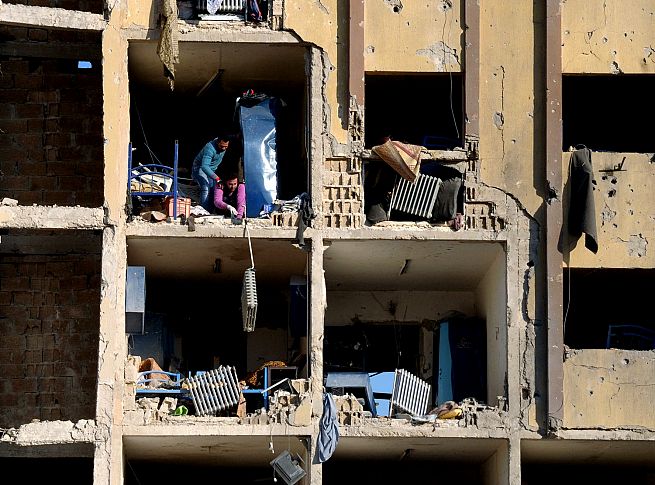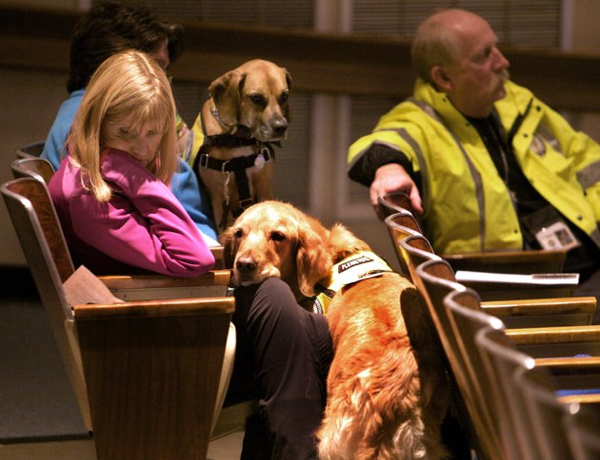Notes
The Aleppo University Bombing and the Banality of Good
I supposed I’m biased: a university professor would be expected to take a university bombing seriously. Likewise the journalists, who use their university educations every day, and so the 80 people killed in the attack on Aleppo University yesterday might be receiving more than the usual amount of attention. What is 80 more in a civil war that has claimed 60,000 dead and driven ten times that number into refugee camps? Civil wars aren’t civil, so why should a university expect to be spared?
One answer can be taken from this photo of some of the physical damage from the blast. There is nothing exceptional about the photo–it’s just another entry in the ever expanding archive of rubble world–and there is nothing exceptional about the building. And that’s the point: what you see is in fact thoroughly ordinary, mundane, routine, to be expected. Square rooms, identical radiators, standardized fittings and furniture–just another block of rooms designed for low-impact activities such as reading, talking, writing, or sleeping. It may have been a dorm or perhaps a set of faculty offices, but the purpose in any case was civil. No one was there for the amenities, but no one had to worry–it seemed–about being killed.
The blast brings to light the building’s routinized design and construction practices. Instead of asking “Is this your room” or “Is this your office,” viewers are led to ponder the sameness of things: same square spaces, same concrete and metal materials, same bomb, same indiscriminate carnage. Once the building was up, most of the people using it never had to think about how it was built, where the pipes ran through the walls, or how long some of the maintenance could be deferred. They had better things to do, and the point of the university was to created a space where those things could be done. The higher learning benefited from other forms of thoughtlessness, a kind of peace that had been acquired by drawing on many of civilization’s arts, including architecture, engineering, and management. Because others had been thinking professionally, one could be free to learn those skills and many others, not least the arts that can improve civic association.
Put another way, by providing a not too emotionally charged photo of a damaged building, the photograph asks us to consider how damage extends beyond the personal tragedies of death and maiming to include the structure of society as a whole. Because the building is placed in the middle distance, our position as viewers is placed in a corresponding spot: neither completely distant from nor intimately involved in the scene, we are invited to understand but left too far away to directly participate. In short, we are put in a civic relationship with those in the wreckage: they are neither wholly foreign nor familiar, but inhabiting a common social structure that extends from their space into ours. A structure that, like the building, can be both taken for granted and deliberately damaged.
Hannah Arendt, who cared a great deal about civic life, is known in part for developing the concept of “the banality of evil.” This somewhat counter-intuitive phrase should not be summarized lightly, but it is fair enough for the moment to say that she was focusing on how evil benefits from a certain form of thoughtlessness. That was how Adolf Eichmann and other Nazi executioners could sleep at night, by thinking about only their technical responsibilities while accepting unthinkingly the false beliefs and hideous values that made genocide seem normal. Much has been said for and against Arendt’s argument, both in respect to the particular case and the problem of evil more generally. I want to add a small emendation that is brought to mind by the photo of a ruined buiilding in Aleppo.
The point is offered by the deep asymmetry in the image between the routinized, taken-for-granted infrastructure and the unexpected but intentional act of destruction. In this case, thoughtlessness was largely in the service of the good. Indeed, that’s why the university was so vulnerable. By not having to think about security, and by having a temporary reprieve from the throat-tightening anxieties of the war, people were able to think–and probably to think as Arendt would have wanted, that is, by questioning and improving the basic assumptions of the society to combat the banality of evil.
A student at the university remarked that,”with all the brutality, no one could imagine [the government] shelling a university.” The LA Times story goes on: “The woman, who crosses multiple rebel and government checkpoints to reach school each day, had been determined to pursue her education despite the violence. But now she is rattled. ‘This is not the way schools are supposed to be,’ she said.”
Not thinking about material infrastructure is not the same as not thinking about violence. but my point stands: a well functioning civil society is one in which you don’t have to worry about civil war. The university represented the last space where that was possible, and now that has been lost as well.
The thoughtfulness desperately needed in Syria, the Middle East, and everywhere else around the globe requires its own forms of thoughtlessness. Ignoring ethical ideas leads to the banality of evil, but there is another kind of inattention that one might call the banality of good. How do we know? Because in Syria we can see it exposed to view, as it is being destroyed.
— Robert Hariman
(cross-posted from No Caption Needed)
(photo: Syrian Official News Agency, SANA via AP)



Reactions
Comments Powered by Disqus